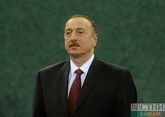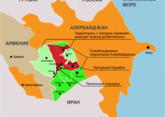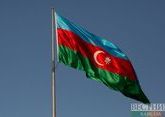Today marks the third anniversary of Azerbaijani army’s victory in April 2016 clashes.
On the night of April 2, 2016, Azerbaijan's frontier positions were subjected to heavy fire from the Armenian side. Six civilians were killed, including two children aged under 16, and 26 people were injured as a result of shelling of Azerbaijan’s settlements located along the line of contact by Armenia. Numerous public and private facilities, including civil infrastructure, were severely damaged as a result of the offensive, 232 houses, 99 power transmission line poles, three electric power substations, kilometers of water and gas pipes were destroyed. The Armenian Armed Forces launched the guided-missiles at social institutions, including schools, hospitals and places of worship. Large-caliber artillery shells fell during the prayer service in one of the mosques.
In order to suppress the Armenian provocation, ensure safety of the civilian population, the Azerbaijani Armed Forces command made a decision to take urgent response measures in the Aghdere-Tartar-Aghdam and Khojavand-Fuzuli directions.
As a result, during the four days of fighting, Azerbaijani Armed Forces liberated the heights near the Talish village, as well as the Seysulan point, which could pose a threat to the safety of Goranboy district and the city of Naftalan. The Lele Tepe strategic height located in the direction of the Fuzuli district and allowing controlling a vast territory was taken under control. Also, as a result of the April fighting, the Azerbaijani Armed Forces ensured control over the roads in the Aghdere-Madaghiz direction.
As many as 30 tanks, up to 15 armored guns and fortifications belonging to the Armenians were destroyed, 320 Armenian soldiers were killed and more than 500 servicemen of the enemy were wounded during the clashes.
The military operations were stopped on the line of contact between Azerbaijani and Armenian armies on April 5 at 12:00 with the consent of the sides.
As a result of the successful counteroffensive, more than 2000 hectares of territory were liberated from the Armenian occupation, even a larger territory came under the control of the Azerbaijani army. Azerbaijani Armed Forces have fortified the liberated lands.
In general, the April clashes have demonstrated the attention paid by Azerbaijani President and Supreme Commander-in-Chief of the Armed Forces Ilham Aliyev to the army, as well as high fighting efficiency of the Azerbaijani army and the ability of the Azerbaijani Armed Forces to liberate the occupied territories at any time. Azerbaijani army’s victories in the April battles have laid the foundation of the liberation of Azerbaijani lands from the Armenian occupation.
Political scientist Rovshan Ibrahimov, speaking to Vestnik Kavkaza, noted that the situation in the Nagorno-Karabakh conflict zone has changed in three years after the four-day April battles for Karabakh. "There has been a change in power in Armenia, and a new milestone was launched as part of the talks on a peaceful settlement of the conflict. First of all, I mean the first official meeting of the President of Azerbaijan with the new head of Armenia, the Prime Minister of the Republic. I think that the format of further negotiations was also discussed at the meeting. If we consider the potential for the resumption of full-fledged hostilities, then Azerbaijan’s military power has grown significantly in three years," he said.
"In fact, the liberation of part of the Azerbaijani territories on April 2, 2016 indicated the possible consequences of resuming active hostilities. The change of power in Armenia also became the Armenian society's response to the results of the April battles, as the former Armenian authorities demonstrated their inability to adequately resolve the Nagorno-Karabakh conflict and their desire to use it as an excuse to explain unresolved political, economic, social and demographic problems in Armenia. Ultimately, the four-day war's destruction of the myth of the Armenian army power has contributed to the fall of the Kocharyan and Sargsyan regime," Rovshan Ibrahimov noted.
Against this background, Armenian Defense Minister David Tonoyan's statement about Yerevan's transition to the 'new war for new territories' formula damages the negotiation process, the expert noted. "His speech was intended for the Armenian diaspora in the United States and was populist in nature with the aim of receiving more money from radical Armenians in the U.S. These words are all the more provocative because they were said immediately after the Vienna meeting - if this continues, it can cause an escalation of tension in the conflict zone, up to the resumption of hostilities. If current Prime Minister Pashinyan cannot control his government, which has no unified approach to such important issues as the Nagorno-Karabakh settlement, then anarchy will rule in Armenia in the near future," he warned.










